#backend frameworks
Text

Top 11 Backend Frameworks for Web Development in 2024
Discover the top 11 backend frameworks for web development in 2024. Enhance your projects with the latest tools and technologies. Stay ahead in the competitive landscape with our expert guide.
0 notes
Text
Powering the Future: Top Backend Frameworks for Developers in 2024
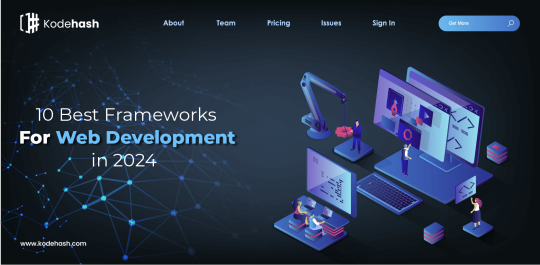
The backend, the unseen engine that drives web applications, is undergoing constant evolution. Backend frameworks provide developers with essential tools and structures to build robust, scalable, and secure web applications. In 2024, several established frameworks continue to dominate the landscape, while new contenders emerge with exciting features. This guide explores the top backend frameworks developers should consider for their 2024 projects.
Established Powerhouses:
Django (Python):
A mature and versatile framework known for its "batteries included" philosophy, providing a wide range of built-in features for rapid development.
Ideal for complex web applications, e-commerce platforms, and content management systems (CMS) due to its robust security features and scalability.
Python's popularity and extensive libraries further enhance Django's appeal.
Spring Boot (Java):
A popular choice for enterprise-level applications, known for its modular design and focus on developer productivity.
Simplifies development by auto-configuration and dependency injection, reducing boilerplate code.
Spring Boot's vast ecosystem of libraries and tools caters to diverse project needs.
Laravel (PHP):
A feature-rich framework offering a clean and expressive syntax for PHP development.
Laravel excels at building APIs and web applications with robust security features and a thriving community.
Its focus on rapid development and MVC (Model-View-Controller) architecture makes it popular for building complex web projects.
ASP.NET Core (C#):
Microsoft's open-source framework for building modern web applications.
Offers cross-platform compatibility, allowing development for Windows, Linux, and macOS.
Strong integration with other Microsoft technologies like Azure cloud platform makes it attractive for enterprise development.
Rising Stars:
FastAPI (Python):
Gaining rapid traction for its focus on high performance and developer experience.
Leverages Python's type hints for static type checking, enhancing code reliability.
Ideal for building modern APIs requiring speed, efficiency, and a clean development workflow.
NestJS (JavaScript/TypeScript):
A server-side framework for building scalable Node.js applications with a strong focus on architecture and testability.
Employs TypeScript for static typing and leverages design patterns like dependency injection for better code organization.
Ideal for large-scale, complex web applications requiring a structured and maintainable codebase.
Choosing the Right Framework:
Selecting the best backend framework depends on your project's specific needs and your team's skillset. Here are some key factors to consider:
Project Requirements: Evaluate the complexity, scale, and performance needs of your project.
Programming Language Expertise: Choose a framework built on a language your team is comfortable with.
Development Speed and Maintainability: Consider the framework's features and structure to optimize development efficiency and code maintainability.
Security: Prioritize frameworks with a strong focus on security best practices.
Community and Support: A large and active community allows for easier access to support and learning resources.
Beyond the Framework: The Importance of Skills
While frameworks provide valuable tools, developer skillset remains paramount. A strong understanding of programming languages, object-oriented programming (OOP) principles, database management, and security best practices is essential for building robust backend applications.
The Future of Backend Frameworks
The future of backend frameworks lies in:
Microservices Architecture: Breaking down applications into smaller, independent services for increased scalability and maintainability.
Cloud-Native Development: Optimizing frameworks for deployment and management on cloud platforms like AWS, Azure, and Google Cloud Platform (GCP).
Artificial Intelligence (AI) Integration: Leveraging AI for tasks like code generation, testing, and performance optimization.
Conclusion:
Backend frameworks empower developers to build the backbone of the digital world. In 2024, the established powerhouses continue to deliver, while rising stars like FastAPI and NestJS offer exciting possibilities for modern web application development. By understanding your project needs, considering these factors, and fostering strong developer skills, you can choose the framework that helps you build successful and future-proof applications.
0 notes
Text
7 Most Popular Backend Frameworks in 2023: What Are They and Which One to Choose
Read our blog at
0 notes
Text
Backend frameworks support the behind-the-scenes that enables an application to function as intended even while it is invisible to the end user. Laravel, Django, Spring Boot, Ruby on Rails, and others are among the top 10 backend frameworks in 2023; each has its own advantages and disadvantages.
It is very crucial to choose the right backend framework as it helps in making the development process easier . So let's dive right in and see which backend framework will serve you best in 2023.
Read more: https://www.zerodollartips.com/most-popular-backend-frameworks/
0 notes
Text
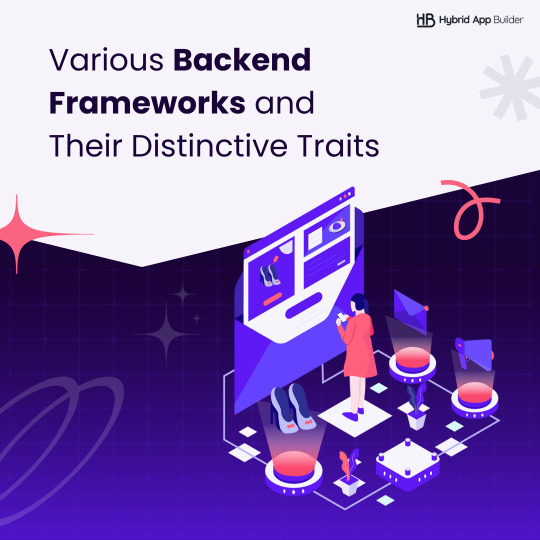
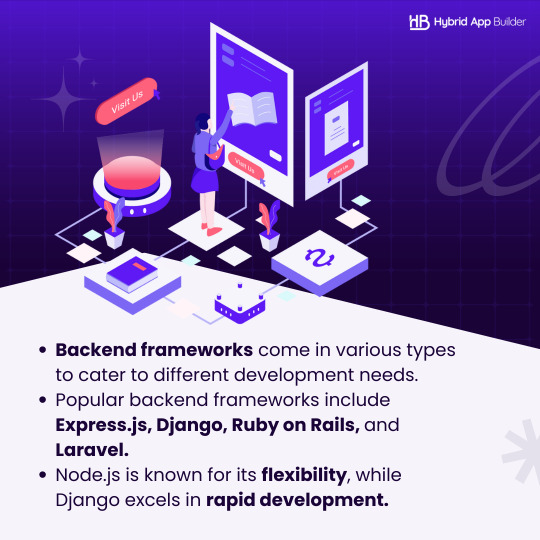
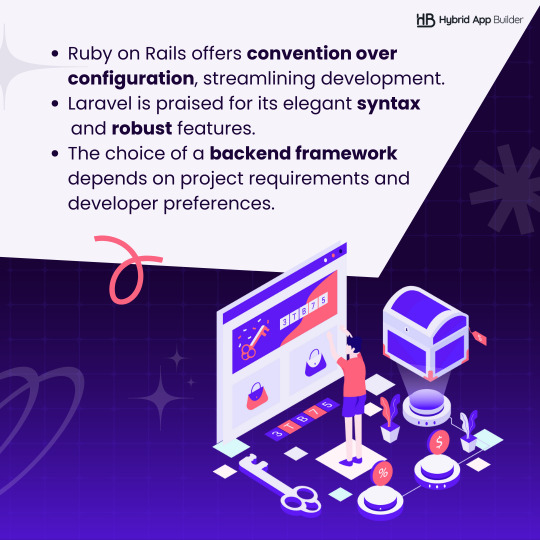

Exploring the Backbone: A Journey Through Various Backend Frameworks and Their Unique Characteristics. Discover the perfect fit for your next project! 🚀💡
1 note
·
View note
Text
0 notes
Text
7 Most Popular Backend Frameworks for Web Development
New Post has been published on https://www.justwebdevelopment.com/blog/7-most-popular-backend-frameworks-for-web-development/
7 Most Popular Backend Frameworks for Web Development
7 Most Popular Backend Frameworks for Web Development
When it comes to web development, the backend plays a key role in making the magic happen behind the scenes. It is responsible for data processing, processing requests, and ensuring the smooth functioning of websites and their web applications. The backend framework simplifies the development process by providing a set of tools, libraries, and configurations that facilitate the creation of robust and scalable applications. In this article, I will introduce her 7 most popular backend web development frameworks.
Backend Framework
A backend framework is a collection of tools and technologies developers use to create the server side of web applications. It provides a framework for organizing code, processing requests, managing databases, and other tasks. Choosing the correct backend framework is critical to a project’s success since it influences performance, scalability, security, and developer efficiency.
Factors for a Backend Framework
Developers must consider the following criteria while selecting a backend framework:
Language support: Language support is essential when selecting a backend framework. Some frameworks, such as Ruby on Rails or Django for Python, are designed to work with specific programming languages.
Scalability: You’ll need a backend framework to handle increased traffic and data processing without losing performance as your online application expands. Look for frameworks that can readily interface with other tools and services and have robust scaling capabilities.
Security: When selecting a backend framework, keep safety in mind. Your framework should include built-in security measures like encryption and authentication and regular upgrades to fix any vulnerabilities.
Community support: The importance of community support cannot be overstated. A vibrant developer community can provide vital resources and support, such as documentation, tutorials, and plugins.
Node.js:
Node.js has become very popular in recent years due to its ability to build fast and scalable
network applications. It uses JavaScript as its programming language, making it popular with developers already familiar with front-end JavaScript frameworks such as React and Angular. Node.js is based on an event-driven, non-blocking I/O model and can efficiently handle large numbers of concurrent connections. Leveraging a vast ecosystem of modules available through npm (Node Package Manager), Node.js enables developers to create powerful and feature-rich applications.
Django:
Django is a high-level Python web framework that follows the Battery-in-Box principle. It provides a powerful set of tools and libraries for rapidly building web applications. Django follows the Model-View-Controller (MVC) architectural pattern and emphasizes the concepts of reusability, scalability, and security. It simplifies the development process with built-in authentication, database management, and URL forwarding capabilities. Strong community support and extensive documentation make Django an excellent choice for Python developers.
Ruby on Rails:
Ruby on Rails (aka Rails) is a full-stack web application framework written in Ruby. Rails follow a convention principle before constructing it. In other words, sensible defaults and conventions are provided so that developers can focus on application-specific logic rather than off-the-shelf code. Rails is known for its focus on developer productivity and code simplicity. It includes features such as automatic data modeling, database migration, and built-in testing tools, making it an efficient framework for building web applications.
Laravel:
Laravel is a PHP web application framework known for its elegant syntax and expressive coding style. It follows the Model-View-Controller (MVC) architectural pattern and has extensive out-of-the-box features such as routing, caching, and authentication. Eloquent, Laravel’s object-relational mapping tool (ORM), simplifies database interaction, allowing developers to interact with databases through an intuitive and fluid API. An active community and extensive documentation make Laravel a popular choice for PHP developers.
Express.js:
Express.js is a minimal and flexible web application framework for Node.js. It offers many simple features for building web applications and APIs. Express.js follows a middleware-based approach, allowing developers to define custom middleware functions that can be used for tasks such as request handling, authentication, and error handling. Its simplicity and modularity make it a popular choice for developers who prefer a lightweight framework that can be easily extended and customized.
Feather Boots:
Spring Boot is a Java-based backend framework that simplifies the development of Java applications. It provides a pre-composition convention approach and a set of features for building enterprise-class applications. Spring Boot includes features such as auto-configuration, dependency management, and embedded servers to help developers get started quickly and reduce standard code. Spring Boot is widely used for building scalable and robust Java applications due to its strong ecosystem and extensive community support.
ASP.NET:
ASP.NET is a web application framework developed by Microsoft and commonly used to build enterprise-level applications. It supports multiple programming languages such as C# and Visual Basic and provides a rich set of tools and libraries for building web applications. ASP.NET follows the Model-View-Controller (MVC) architectural pattern and includes features such as built-in security.
Conclusion
In conclusion, developers can choose from many popular backend web development frameworks. Each framework offers its own set of tools and features to simplify the development process and improve web application performance and scalability. Node.js, Django, Ruby on Rails, Laravel, Express.js, Feather Boots, and ASP.NET are among the most popular backend web development frameworks in use today. Each framework has its own strengths and is suitable for different kinds of web applications and programming languages. Therefore, it is important for developers to choose the right framework based on their project needs and experience. With the right frameworks and strong community support, developers can create powerful, scalable, and secure web applications that meet the needs of their customers and users.
Read this post from CrunchyTricks to learn how to Create a Strong Website With Wix Code.
Justwebdevelopment can also help you in...
WordPress Development | WordPress Theme Development | PSD To WordPress
#Backend Frameworks#Backend Frameworks for Web Development#Most Popular Backend Frameworks#Most Popular Backend Frameworks for Web Development#Web Development
0 notes
Text
Latest Backend Frameworks for Web Application Development
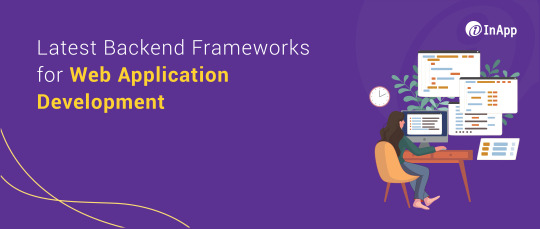
Backend frameworks can streamline web application development with standardized codes, configurations, and tools. By systemizing the programming process, backend frameworks make it faster and easier to implement key web application components like user authorization, security, privacy encryptions, database management, and more.
Frameworks are full-stack applications that include almost all the functionality needed to create a web application. Users don’t interact directly with server-side frameworks because they work behind the scenes of a website. However, they will notice how well a web application functions, which a backend framework can strengthen.
For developers, backend frameworks can make the coding and maintenance process much faster, as well as reduce the potential for bugs and other errors. Let’s learn more about the latest backend frameworks for web application development projects.
Different Types of Web Frameworks
Backend frameworks incorporate all of the different building blocks of a web application, such as HTTP requests, templating, routing, and database object-relational mappers (ORMs). The architecture of a framework defines the relation between its components, such as…
Model-View-Controller (MVC): MVC models are used for developing a user interface (UI) with three interconnected elements to separate internal representations of information from the ways information is presented to and accepted by the user.
Model-View-View Model (MVVM): In MVVM, the view layer acts as a controller and converts the data objects from the model layer into manageable components. The view layer handles all the user requests directly, so the data binding is more straightforward.
Push-based: Push-based architecture adopts actions that do the necessary processing and then pushes the data to a view layer to furnish the outcome.
Pull-based: Also called component-based, a pull-based framework starts with the view layer, which in turn can pull outcomes from diverse controllers as required.
Three-tiered: Comprises three physical tiers — the presentation tier, or user interface; the application tier, where data is processed; and the data tier, where the data associated with the application is stored and managed. Because each tier runs on its own infrastructure, it can be developed simultaneously by a separate development team and can be updated or scaled as needed without impacting the other tiers.
Features and Benefits of the Most Popular Backend Frameworks
Choosing the right backend framework will depend on the needs of your specific project. Here are some of the most common ones.
Ruby on Rails
Ruby on Rails, also known as Rails or RoR, is an open-source framework used by well-known companies like Apple, Hulu, Github, Spotify, and Airbnb. This MVC full-stack framework is almost 20 years old, but it remains a top framework because of its intuitiveness, strong developer community, and a plethora of tools.
Django
One of the most popular Python web frameworks, Django includes dozens of extras to handle common web development tasks. This framework streamlines user authentication, content administration, site maps, RSS feeds, and many more tasks. Django also helps to prevent security issues like SQL injection, cross-site scripting, cross-site request forgery, and clickjacking.
Express JS
Express is a minimal and flexible Node.js web application framework with a robust set of features for web and mobile applications. Developers can create robust APIs with a variety of HTTP utility methods and middleware. Express provides a thin layer of fundamental web application features, without obscuring Node.js features.
Flask
This Python framework is classified as a microframework because it does not require particular tools or libraries. Extensions exist for object-relational mappers, form validation, upload handling, various open authentication technologies, and several common framework-related tools. Popular applications that use the Flask framework include Pinterest and LinkedIn.
Gin Gonic
Gin is a web framework written in Golang. Gin Gonic is particularly useful for developers looking for better performance. It reportedly features a Martini-like API that’s up to 40 times faster. It also has a huge community, extensive code coverage(~ 98%), and comparatively fewer issues than some other backend frameworks.
Laravel
Laravel is a free and open-source PHP web framework following the MVC architectural pattern and based on Symfony. Laravel features include a modular packaging system with a dedicated dependency manager, different ways for accessing relational databases, and utilities that aid in application deployment and maintenance.
CodeIgniter
CodeIgniter is an open-source framework used for building dynamic websites with PHP. CodeIgniter is loosely based on the MVC architecture. While controller classes are a necessary part of development under CodeIgniter, models and views are optional. CodeIgniter is most often noted for its speed when compared to other PHP frameworks.
CakePHP
CakePHP also is an open-source framework that follows the MVC approach and is written in PHP. Modeled after engineering concepts similar to Ruby on Rails, CakePHP uses well-known software design premises, such as convention over configuration, active record, association data mapping, and front controller.
The Bottomline
The right backend framework can speed up the development process. We recommend working with an experienced software development team to find the ideal framework for your web application.
InApp’s backend development engineers have the technical experience you need for high-quality web applications, including databases, backend logic, APIs, and servers. Contact us to learn how we can help your web application development project succeed.
0 notes
Text
im asking here bc i feel like people here maybe have more experience with this. does anyone know where i could set up a personal blog? i considered tumblr but id like this to be more of a personal experiment rather than tied to a social media site. i dont want to have to pay for a custom domain and dont have enough frontend experience to build something from scratch though,, ;__;
no worries if not, just wanted to ask if anyone has done this! <3
#for ref i can do html/css/bootstrap/backend#angular/typescript esque frameworks and javascript integration big no and idk i want to spend less time customizing more time writing#i already spend too much time coding anyway
56 notes
·
View notes
Text
The Roadmap to Full Stack Developer Proficiency: A Comprehensive Guide
Embarking on the journey to becoming a full stack developer is an exhilarating endeavor filled with growth and challenges. Whether you're taking your first steps or seeking to elevate your skills, understanding the path ahead is crucial. In this detailed roadmap, we'll outline the stages of mastering full stack development, exploring essential milestones, competencies, and strategies to guide you through this enriching career journey.

Beginning the Journey: Novice Phase (0-6 Months)
As a novice, you're entering the realm of programming with a fresh perspective and eagerness to learn. This initial phase sets the groundwork for your progression as a full stack developer.
Grasping Programming Fundamentals:
Your journey commences with grasping the foundational elements of programming languages like HTML, CSS, and JavaScript. These are the cornerstone of web development and are essential for crafting dynamic and interactive web applications.
Familiarizing with Basic Data Structures and Algorithms:
To develop proficiency in programming, understanding fundamental data structures such as arrays, objects, and linked lists, along with algorithms like sorting and searching, is imperative. These concepts form the backbone of problem-solving in software development.
Exploring Essential Web Development Concepts:
During this phase, you'll delve into crucial web development concepts like client-server architecture, HTTP protocol, and the Document Object Model (DOM). Acquiring insights into the underlying mechanisms of web applications lays a strong foundation for tackling more intricate projects.
Advancing Forward: Intermediate Stage (6 Months - 2 Years)
As you progress beyond the basics, you'll transition into the intermediate stage, where you'll deepen your understanding and skills across various facets of full stack development.
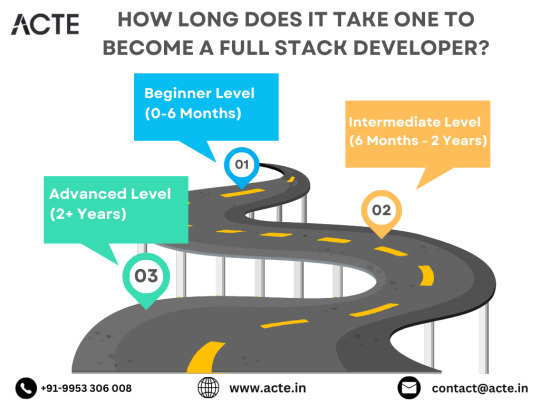
Venturing into Backend Development:
In the intermediate stage, you'll venture into backend development, honing your proficiency in server-side languages like Node.js, Python, or Java. Here, you'll learn to construct robust server-side applications, manage data storage and retrieval, and implement authentication and authorization mechanisms.
Mastering Database Management:
A pivotal aspect of backend development is comprehending databases. You'll delve into relational databases like MySQL and PostgreSQL, as well as NoSQL databases like MongoDB. Proficiency in database management systems and design principles enables the creation of scalable and efficient applications.
Exploring Frontend Frameworks and Libraries:
In addition to backend development, you'll deepen your expertise in frontend technologies. You'll explore prominent frameworks and libraries such as React, Angular, or Vue.js, streamlining the creation of interactive and responsive user interfaces.
Learning Version Control with Git:
Version control is indispensable for collaborative software development. During this phase, you'll familiarize yourself with Git, a distributed version control system, to manage your codebase, track changes, and collaborate effectively with fellow developers.
Achieving Mastery: Advanced Phase (2+ Years)
As you ascend in your journey, you'll enter the advanced phase of full stack development, where you'll refine your skills, tackle intricate challenges, and delve into specialized domains of interest.
Designing Scalable Systems:
In the advanced stage, focus shifts to designing scalable systems capable of managing substantial volumes of traffic and data. You'll explore design patterns, scalability methodologies, and cloud computing platforms like AWS, Azure, or Google Cloud.
Embracing DevOps Practices:
DevOps practices play a pivotal role in contemporary software development. You'll delve into continuous integration and continuous deployment (CI/CD) pipelines, infrastructure as code (IaC), and containerization technologies such as Docker and Kubernetes.
Specializing in Niche Areas:
With experience, you may opt to specialize in specific domains of full stack development, whether it's frontend or backend development, mobile app development, or DevOps. Specialization enables you to deepen your expertise and pursue career avenues aligned with your passions and strengths.
Conclusion:
Becoming a proficient full stack developer is a transformative journey that demands dedication, resilience, and perpetual learning. By following the roadmap outlined in this guide and maintaining a curious and adaptable mindset, you'll navigate the complexities and opportunities inherent in the realm of full stack development. Remember, mastery isn't merely about acquiring technical skills but also about fostering collaboration, embracing innovation, and contributing meaningfully to the ever-evolving landscape of technology.
#full stack developer#education#information#full stack web development#front end development#frameworks#web development#backend#full stack developer course#technology
6 notes
·
View notes
Text
Somebody needs to go talk to the W3C and inform them that, frankly, the document metaphor is dead. Nobody* has made a webpage designed to be a page of hypertext in twenty years. It doesn't, hasn't, won't happen. We gotta find something better.
*Within a reasonable margin of error, and with exception to Wikipedia and similar projects
#its clear that what people want from html+css+js+backend is an MVC framework#but the current infrastructure just wasnt built for that#and so we are stuck with the current abomination of preprocessers and backend js and webasm and so on and so forth#my thoughts#programming
3 notes
·
View notes
Text
everyone a web developer where's my framework babes at
8 notes
·
View notes
Text
"learn to code" as advice is such bullshit. i have learned and used four and a half different coding languages through my career (html/css, java, python+sql, c++) and when i say used i mean I've built things in every one but the things that i actually used these languages for??? these earn zero money (with the caveat of until you have seniority in, e.g. front end web dev) what people really mean when they say learn coding is "learn to code. go into investment banking or finance startups." coding does not inherently have money in it. my absolute favourite part of coding? my peak enjoyment? was when i was developing for a visual coding language (you put it together like a flowchart, so say youre using a temperature sensor and you want it to log the temperature once every four hours, you can put the blocks together to make it do that. i was writing the code behind the blocks for new sensors) and i was earning £24k a year and that wasn't even part of my main role. it was an extra voluntary thing i was doing (i was working as a research assistant in biosensors - sort of - at a university, and was developing the visual code for students who didnt want to learn c++) like. i want people to learn to code, i want people to know how their electrical equipment works and how coding works, but dont believe the myth that there is inherently money in coding. the valuable things, the things people are passionate about are still vulnerable to the passion tax (if you want to do it you dont have to be paid for it). skills arent where the money is, money is where the money is.
#this is a bit incoherent but you know what i mean#i hated coding because it made my brain bend into shapes i didn't like but i did a Lot of coding and i was quite good at it#c++ for mechatronics (coding for mechanical devices usually things id built myself lol x) was my sweet spot#.jtxt#the half language is sql#you could count html and css as different languages. but css is like a framework for html so i dont jfbdhd. maybe thats another half#ive learned and used five languages where css and sql are both half languages jfbshs#also before anyone is like but you can use python for backend web dev and everyone needs that or blah blah databases#i knoooooow. create an extra 20000 database experts and you'll make that a minimum wage role. love it#anyway i used python for my research all the way through my research. from like machine code to image analysis software thatd take half a#day to run bc of the ridiculous volume of my image folders
11 notes
·
View notes